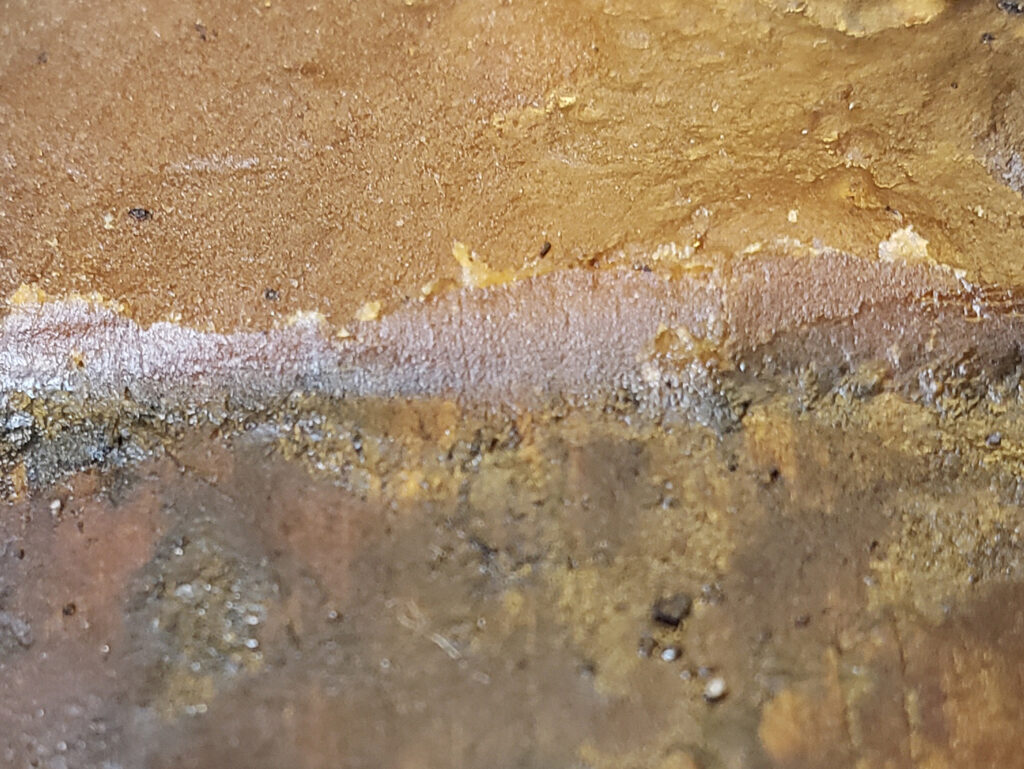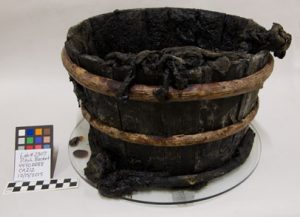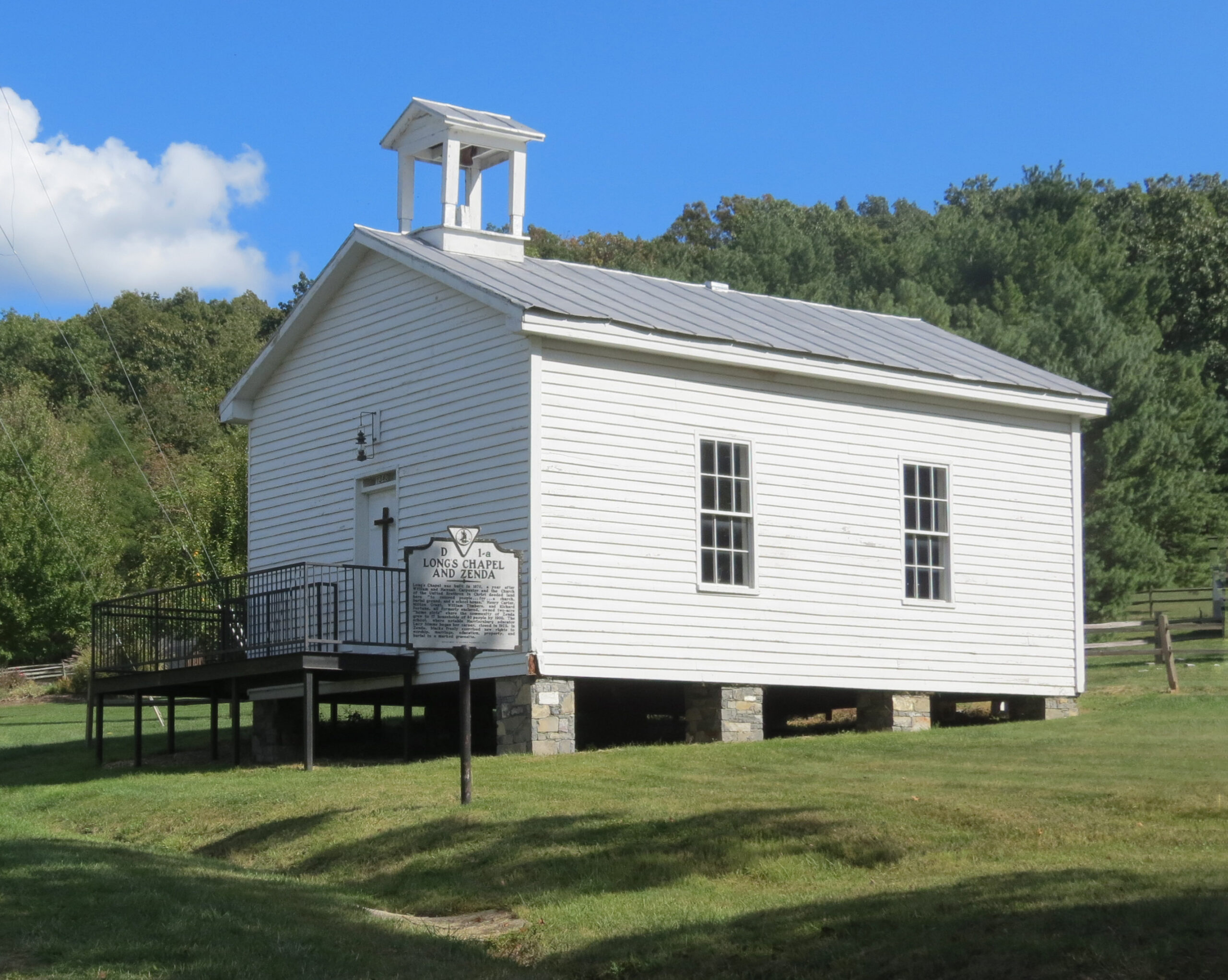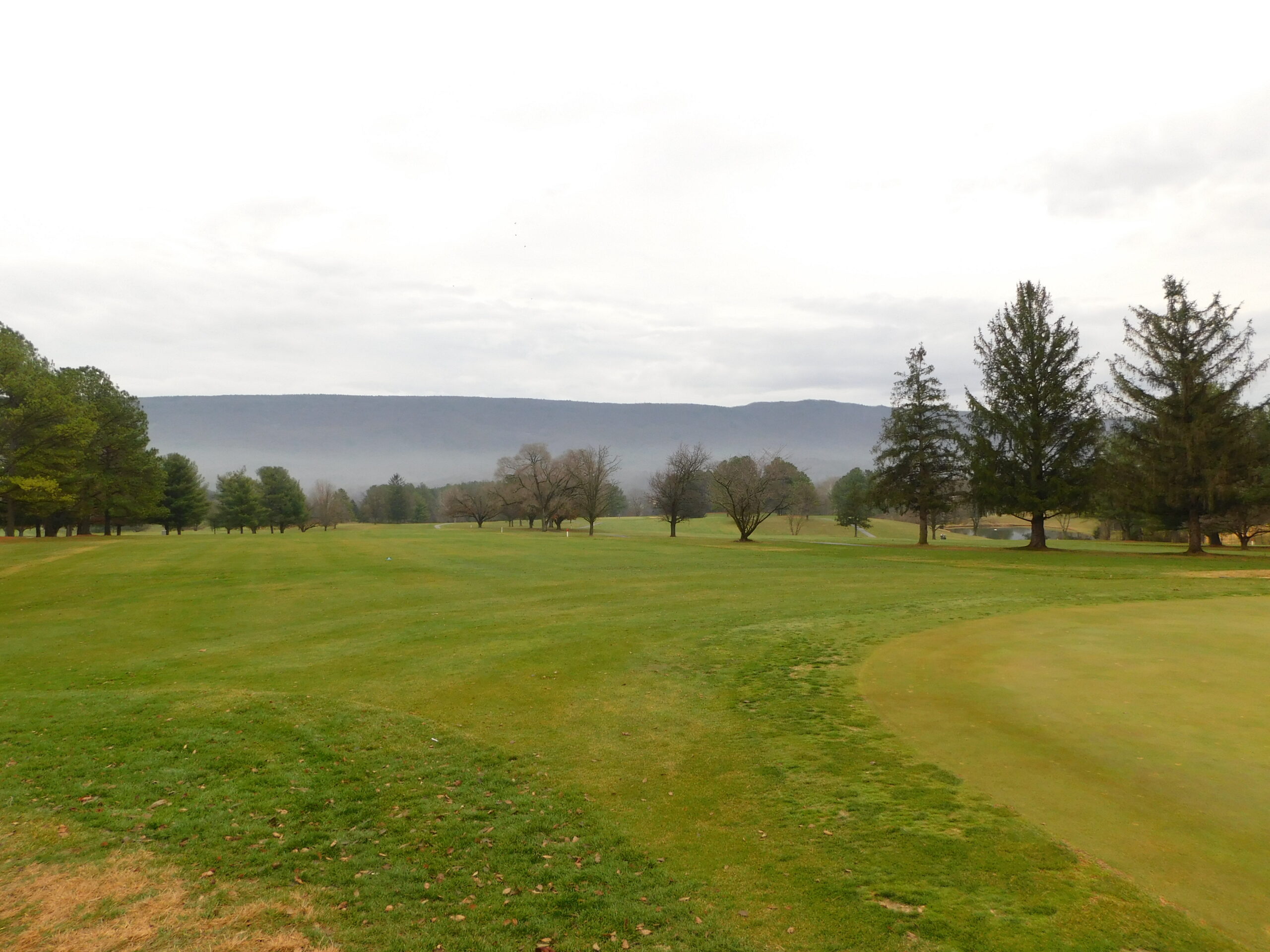Spotlight on DHR Collections: A Tale of Two Buckets

Conservation involves a lot of investigation and research. During the treatment of an object, many questions arise that make conservation all the more interesting. One of two buckets recovered from the Betsy, a ship scuttled in the York River by the British during the Siege of Yorktown in 1781, provides a recent example of an artifact that raises many questions.
Buckets were common items in the 1700s just as they are today. They were made by coopers who produced a wide variety of wooden containers. Of the two Betsy buckets, one was clearly used for holding pitch, the tar-like substance that sailors applied when waterproofing vessels. A bucket of pitch would clearly be an important item for any ship of the Betsy’s era.
The second bucket is a bit of a mystery. Originally thought to be another pitch bucket, now we are not so sure. It definitely has black stains on the surface, which might be a good indicator of pitch coming into contact with the wood. But other than those stains, there is little evidence of it being used for pitch. A bucket and tub could serve many other purposes on a ship like the Betsy. It could have been used for water or slop, or as a chamber pot of some kind, or a tub to hold supplies like match cords. We simply do not know. Although through scientific analysis, we hope to identify the black stains on the surface, and gain a better understanding of the bucket’s specific use.
At this stage, part of the problem is that the conservation that was done decades ago appears to have never been completed. The result is a heavy layer of wax on the surface—in some places a quarter of an inch thick!—that conservation staff at DHR is currently in the process of reducing. The wax build up obscures many details that might tell us something about the bucket’s use.
What we do know is that the bucket is short in height, and it was being modified to make it shorter yet for some reason. About five of the staves have cut marks most of the way, but not completely, through the top that would make them the same height as the rest of the staves. But why? Why only cut them part of the way through before moving on to the next stave rather than finishing the cut? The bucket must have been disassembled to do this since the cut marks go from the inside out. Is the bucket really a tub? There are no handles. If the notch in stave 12 was intentionally cut, what was the purpose? Was it for a ladle or some other utensil used with the bucket? It also is possible that the bucket was in the midst of being made or modified when the work was interrupted so the Betsy could be scuttled.
With these questions and others, DHR will contact coopers who work in this historic trade. We hope they can lend some insight into what is going on with this artifact. We also look forward to learning more about the manufacturing process for buckets. As the conservation continues, we will keep you posted. Eventually we hope to re-assemble the bucket, and have replicas made that we can use to teach people today about life on a ship from the Revolutionary War era.
If you have any ideas about this bucket, we would love to hear them! Please contact me, Katherine Ridgway, if you have any questions or thoughts about this or any other artifacts at the Virginia Department of Historic Resources.
--Katherine Ridgway, DHR Conservator










